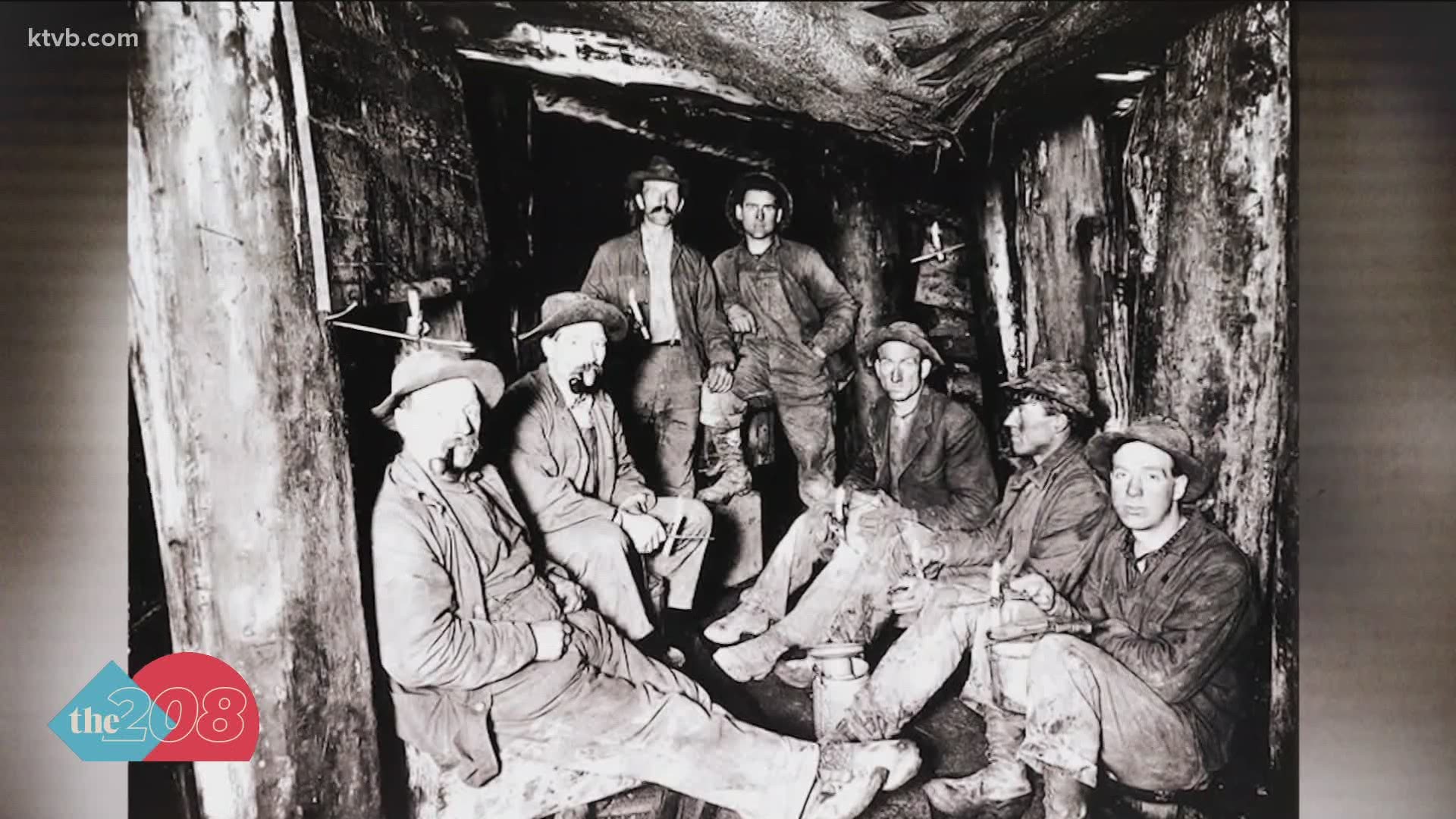BOISE, Idaho — In the late 1800s, Idaho mines took matters into their own hands to get better working conditions and pay by forming unions. Tensions reached a boiling point when the owners of two mines paid laborers less than union wages and miners destroyed mining equipment and hijacked a train.
Idaho produced as much as 19% of the gold mined in the United States. By the 1880s, the center of mining in Idaho had moved to Couer d'Alene, where the lead-silver yields totaling $4 million by 1890. The Bureau of Labor Statistics' inflation data only dates back to 1913, but $4 million in 1913 would be worth $105,294,285.71 in 2020.
"Some of the earliest organized labor efforts started in Owyhee County in the 1860s and we had some work in that era leading up to the 1890s in the railroads, timber but mining was really the specific industry that organized labor emerged," Hannahlore Hein, a state historian, explained.
Unions had been formed during this time but were going to be truly tested.
Minning unions had fought for a wage of $3.50 for ten-hour workdays.
In March of 1892, railroad companies raised the rates for shipping and hauling goods. In turn, mine owners soon cut their laborers' wages by $0.50.
"The miners were not happy with this: there had been efforts to organize before this," Hein said. "And so in the spring of that year several union mine workers commandeered a train in Gem, Idaho."
The train headed towards Wardner, which led to a bloody shootout that "ultimately led to a disaster at the Frisco Mill in Wardner."
Idaho Gov. N.B Willey declared martial law following the shootout.
The organizers of the train heist were taken to Boise for their trials, which became their war room of sorts for the future of their union.
"And while they were awaiting trial, many of them ended up formulating ideas to create kind of an even larger union and that was the western federation of miners and they ended up developing a chapter in the Shoshone District," Hein said. "It ended up being one of the largest unions in the Couer d'Alene, Shoshone County area."
Meanwhile, operations returned to somewhat normal up north, and mine owners continued to curtail organized labor efforts for pay and protections.
The populist, pro-labor candidate Frank Steunenberg was elected governor in 1896. But by the end of the decade, even he had had enough.
"By 1899, there is again another instance of violence that erupted in this region and this brought in what I guess you could call a hard-fisted suppression,” Hein said.
The Bunker Hill and Sullivan mine owners wouldn't pay a union wage, so the union miners decided to undermine the mines' production by blowing up one of their major pieces of equipment.
"So they packed it with dynamite and they caused utter devastation and people died in this instance as well,” Hein said. "In the aftermath of this particular bought of violence, Gov. Steunenberg again felt that he kind of had to follow the path and he also declared martial law."
This all happened in the middle of the Spanish-American War so Idaho’s National Guard Troops were not available to respond.
"So that is why he had to reach out to President McKinley to bring in federal troops to help calm these labor disputes,” Hein said.
Martial law lasted until 1901, but the ripple effect a little longer.
“If you kind of want to look long term about what this impact of this labor dispute was, you end up with Gov. Frank Stuenenburg getting assassinated in 1905,” Hein explained.
To this day, Idaho remains a right-to-work state so other than the destruction and death, one could argue this labor dispute didn't leave much of a lasting impression.
"From the research I’ve done on this topic, it seems as though it just faded but it doesn't seem to have had the impact of other efforts in that time such as the work of suffragists in the state," Hein explained.
Join 'The 208' conversation:
- Text us at (208) 321-5614
- E-mail us at the208@ktvb.com
- Join our The 208 Facebook group: https://www.facebook.com/groups/the208KTVB/
- Follow us on Twitter: @the208KTVB or tweet #the208 and #SoIdaho
- Follow us on Instagram: @the208KTVB
- Bookmark our landing page: /the-208
- And we also turn each episode into a podcast on Spotify or Podbeam
- Still reading this list? We're on YouTube, too:


